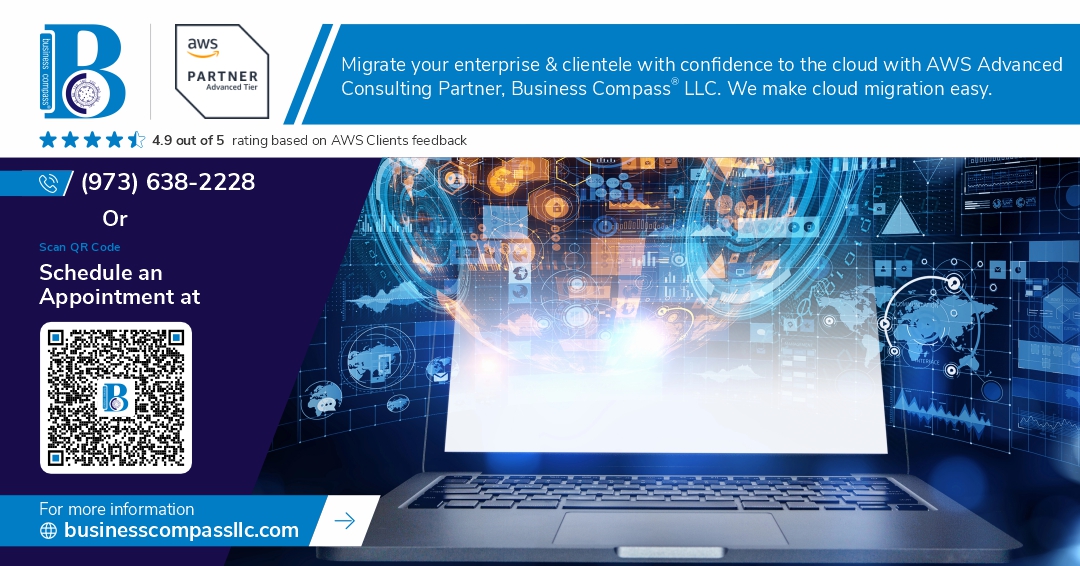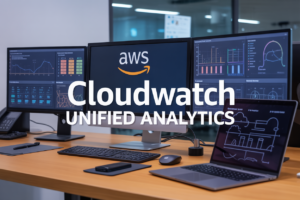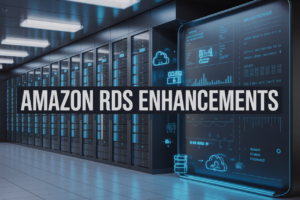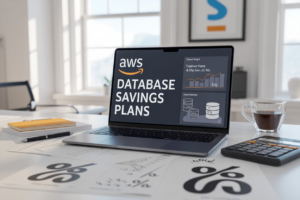Ever tried to explain to your CEO why your app crashed during that big product launch? “We didn’t expect that much traffic” doesn’t exactly inspire confidence in your engineering prowess.
I’ve been there. Sweating bullets while watching error rates climb as customers flee to competitors. Not fun.
Building scalable and secure AWS web applications isn’t just an engineering nicety—it’s business survival. When 40% of users abandon websites that take more than 3 seconds to load, your architecture decisions directly impact revenue.
In this guide, I’ll walk through battle-tested patterns for designing AWS web apps that handle massive traffic spikes without security compromises. You’ll learn exactly how to implement auto-scaling, load balancing, and serverless architectures that grow with your business.
But first, let’s talk about the architectural mistake that tanks even experienced AWS developers…
Understanding AWS Architecture Fundamentals
A. Key AWS services for web applications
AWS offers a toolkit that’ll make your high-traffic web apps sing. Start with Amazon EC2 for compute resources that scale when you need them. Pair that with Amazon S3 for cost-effective object storage—perfect for those static assets weighing down your servers.
For databases, you’ve got options: RDS for traditional relational needs or DynamoDB if you need NoSQL flexibility with single-digit millisecond performance. Both handle scaling so you don’t have to.
Traffic management? Route 53 handles DNS while Elastic Load Balancing distributes incoming requests to prevent any single point of failure. Wrap it all in a CloudFront CDN to cache content at edge locations worldwide.
Don’t sleep on these game-changers:
- Lambda for serverless functions that scale automatically
- API Gateway to manage and secure your APIs
- CloudWatch for monitoring every aspect of performance
- AWS WAF to block malicious traffic before it hits your app
B. Benefits of cloud-native architecture
Ditching the old-school data center approach for cloud-native pays off big time. You’ll notice immediate operational agility—launch in days instead of months. When traffic spikes hit (and they will), your architecture expands automatically, then scales back when things calm down.
The financial model shifts from massive capital expenses to predictable operational costs. You’re literally paying only for what you use, when you use it.
Cloud-native architectures also unlock:
- Automated recovery from failures without human intervention
- Continuous deployment pipelines that push updates safely
- Global presence without building international data centers
- Built-in redundancy across availability zones
C. Serverless vs. traditional infrastructure trade-offs
The serverless vs. servers debate isn’t about which is universally better—it’s about which fits your specific needs.
Serverless shines with its zero-maintenance approach and precise scaling. Your Lambda functions spin up exactly when needed and disappear afterward. No idle servers, no wasted resources. Perfect for variable workloads or microservices.
Traditional EC2 instances give you complete control over your environment, operating system, and networking. You’re the boss of everything happening on that virtual machine.
Here’s the real talk on trade-offs:
| Serverless | Traditional |
|---|---|
| No server management | Complete control |
| Pay-per-execution | Pay for uptime |
| Auto-scaling | Manual scaling configurations |
| Cold start delays | Always running |
| 15-minute execution limit | No time constraints |
| Limited customization | Full customization |
D. Aligning AWS architecture with business goals
Cloud architecture decisions should map directly to business objectives, not just technical preferences.
For early-stage startups, serverless might be the perfect fit—minimal upfront costs with the ability to pivot quickly. Enterprise migrations might need a hybrid approach, moving workloads strategically while maintaining certain on-premises systems.
Cost optimization needs differ too. Some businesses prioritize absolute lowest spend, while others gladly pay premium prices for guaranteed performance during peak demand.
Security requirements vary dramatically by industry. Healthcare and finance face strict compliance standards that dictate specific architecture patterns and data handling practices.
The most successful AWS implementations start by understanding:
- Current and future traffic patterns
- Budget constraints and spending priorities
- Regulatory and compliance requirements
- Availability needs (99.9% vs. 99.999%)
- Internal technical capabilities
Designing for Scale from Day One
A. Implementing auto-scaling strategies
Building an AWS app that can’t handle traffic spikes is like bringing a water gun to a forest fire. Auto-scaling is your best friend here.
Set up Auto Scaling Groups with thoughtful minimum, maximum, and desired capacity values. But don’t just focus on CPU utilization – that’s amateur hour. Mix in memory usage, request counts, and custom metrics that actually reflect your application’s performance.
The real magic? Predictive scaling. If you know your traffic patterns (Monday morning spikes, holiday rushes), configure scheduled scaling actions to spin up resources before users even show up.
B. Leveraging elastic load balancing effectively
Your load balancer isn’t just a traffic cop – it’s the front door to your application. Choose wisely:
- Application Load Balancer for HTTP/HTTPS traffic with advanced routing
- Network Load Balancer when you need extreme performance
- Gateway Load Balancer for security appliances
Cross-zone load balancing ensures even distribution across all your instances. And don’t skimp on health checks – customize them to verify actual application functionality, not just that a port is open.
C. Database scaling approaches (horizontal vs. vertical)
The database scaling debate isn’t actually that complicated:
| Vertical Scaling | Horizontal Scaling |
|---|---|
| Bigger machines | More machines |
| Simpler implementation | More complex but more scalable |
| Limited ceiling | Nearly unlimited growth potential |
| Higher failure impact | Better fault tolerance |
Amazon RDS makes vertical scaling painless with a few clicks, but Amazon Aurora with read replicas gives you the best of both worlds. For true horizontal scaling freedom, DynamoDB provides practically unlimited throughput when configured correctly.
D. Stateless application design patterns
Stateful applications are pure headaches at scale. Break that habit now.
Store session data externally in DynamoDB, ElastiCache, or Amazon Cognito. Centralize user files in S3 instead of local storage. Make each instance completely disposable – if you can’t terminate it randomly without users noticing, you’re doing it wrong.
Embrace the 12-factor app methodology, especially the stateless processes principle. Each request should contain all the information needed to process it.
E. Caching strategies for performance optimization
Caching isn’t an afterthought – it’s essential architecture.
Layer your caching strategy:
- CloudFront for edge caching (static assets, API responses)
- ElastiCache (Redis/Memcached) for application-level caching
- DAX if you’re using DynamoDB
- Database query caching for expensive operations
The trick is invalidation – stale cache can be worse than no cache. Implement time-based expiration for predictable content and event-based invalidation for user-generated content.
Robust Security Implementation
A. Identity and Access Management (IAM) best practices
Security isn’t just a feature—it’s the foundation of your AWS architecture. Start with the principle of least privilege: give users and services exactly what they need, nothing more. Don’t hand out admin access like candy at a parade.
Create dedicated IAM roles for your EC2 instances and Lambda functions instead of embedding access keys in your code (rookie mistake). Use IAM policies with conditions to restrict access based on time, IP address, or even multi-factor authentication status.
Remember to rotate credentials regularly. Set up automated key rotation with AWS Secrets Manager and sleep better at night.
B. Network security with VPC and security groups
Your VPC is your digital fortress. Design it with private and public subnets—keep your database servers and application logic in private subnets where they can’t be directly accessed from the internet.
Security groups are your first line of defense:
- Configure them to allow only necessary traffic
- Deny everything by default
- Be specific with port access
Don’t stop there. Implement network ACLs as a second layer of protection and use AWS Shield if you’re serious about DDoS protection.
C. Data encryption at rest and in transit
Encrypted data is happy data. Use AWS KMS to manage your encryption keys and enable encryption by default for:
- S3 buckets (server-side encryption)
- EBS volumes
- RDS instances
- DynamoDB tables
For data in transit, enforce HTTPS connections with AWS Certificate Manager. It’s free and automatically renews your certificates—a no-brainer.
D. Secrets management and credential handling
Hardcoded credentials in your application code? That’s a ticking time bomb. Instead, centralize your secrets management with AWS Secrets Manager or Parameter Store.
For containerized applications, use IAM roles for ECS tasks and EKS pods. They’ll thank you with secure API calls without the headache of credential management.
Implement a secrets rotation strategy—especially for database credentials and API keys. Automate this process whenever possible and log access to sensitive information.
High Availability and Fault Tolerance
Multi-Availability Zone deployment strategies
Think about this: your app works perfectly until a single data center has a power outage. Then what?
AWS solves this with Availability Zones (AZs) – physically separate data centers in the same region. Smart deployment across multiple AZs is your insurance policy against disasters.
Here’s how to do it right:
- Distribute your EC2 instances across multiple AZs using Auto Scaling Groups
- Set up Multi-AZ RDS deployments for automatic database failover
- Use Application Load Balancers to route traffic only to healthy instances
The real magic happens with proper configuration:
# Auto Scaling Group example
Resources:
WebServerGroup:
Type: AWS::AutoScaling::AutoScalingGroup
Properties:
VPCZoneIdentifier:
- subnet-12345678 # AZ-1
- subnet-87654321 # AZ-2
MinSize: 2
MaxSize: 6
Designing for graceful degradation
Nobody builds perfect systems. The question is: when parts fail, how badly does your app break?
Graceful degradation means your app stays functional (maybe with limited features) even when components fail. It’s about failing softly instead of crashing hard.
Key strategies include:
- Implement circuit breakers with AWS Lambda to prevent cascading failures
- Design stateless applications wherever possible
- Create fallback paths for critical functionality
- Cache aggressively with ElastiCache or CloudFront
Disaster recovery planning with AWS services
Disasters happen. The difference between companies that survive and those that don’t? Planning.
AWS gives you multiple DR strategies:
| Strategy | RTO/RPO | Cost | AWS Services |
|---|---|---|---|
| Backup & Restore | Hours | $ | S3, AWS Backup |
| Pilot Light | 10s of minutes | $$ | EC2, RDS replicas |
| Warm Standby | Minutes | $$$ | Active-passive setup with Route 53 |
| Multi-site | Near zero | $$$$ | Active-active with Global Accelerator |
Don’t just deploy these services blindly. Test your DR plan regularly with AWS Fault Injection Simulator to identify weaknesses before real disasters strike.
Performance Optimization Techniques
Content Delivery Networks (CDN) Implementation
Ever notice how Amazon’s website loads blazingly fast no matter where you are? That’s the magic of CDNs. By deploying Amazon CloudFront, you’ll cache your static assets (images, CSS, JavaScript) at edge locations closest to your users.
Setting up CloudFront isn’t rocket science:
- Create a distribution
- Point it to your S3 bucket or load balancer
- Configure cache behaviors for different content types
The performance gains are massive – we’re talking 40-60% faster page loads. Plus, CloudFront automatically handles SSL termination, reducing the load on your origin servers.
Database Query Optimization
Your database is often the first thing to crumble under high traffic. I’ve seen poorly optimized queries bring down entire AWS architectures.
Quick wins that make huge differences:
- Add proper indexes (but don’t go overboard)
- Use Amazon RDS read replicas for read-heavy workloads
- Implement statement caching
- Consider DynamoDB for high-throughput, low-latency needs
One client cut their database load by 70% just by adding the right composite indexes and moving to a connection pooling strategy.
Asynchronous Processing for Non-Critical Operations
Don’t make users wait for stuff that can happen behind the scenes. Email notifications, logging, analytics tracking – none of these need to block your main request flow.
AWS SQS and Lambda make this dead simple:
- Push tasks to SQS queues
- Trigger Lambda functions to process them
- Scale automatically as queue depth increases
Optimizing API Gateway Configurations
API Gateway is powerful but needs tuning. Enable caching for frequently requested endpoints. Set up throttling limits that protect your backend while handling legitimate traffic spikes.
The little-known trick? Use API Gateway stage variables to swap backend environments without redeploying your entire API.
Monitoring and Operational Excellence
Setting up comprehensive CloudWatch dashboards
Ever tried driving in thick fog without headlights? That’s what running high-traffic AWS apps without proper monitoring feels like. CloudWatch dashboards are your high-beams cutting through that uncertainty.
Start by grouping related metrics. Don’t just throw everything on one screen – nobody’s going to parse that mess. Create separate dashboard views for:
- Frontend performance metrics (load times, API response)
- Backend service health (Lambda durations, ECS cluster stats)
- Database performance (query times, connection counts)
- Cost metrics (service by service breakdown)
Pro tip: Use CloudWatch Composite Alarms to correlate multiple conditions. When your API Gateway traffic spikes 30% but Lambda concurrency only rises 5%, something’s breaking in between.
Implementing smart alerting systems
Alarm fatigue is real. Nothing worse than training your team to ignore alerts because “the system always cries wolf.”
Your alerts should follow this hierarchy:
| Severity | Response Time | Example | Notification Method |
|---|---|---|---|
| Critical | Minutes | Application down | Phone call + SMS |
| Warning | Hours | Unusual error rate | Slack/Teams + Email |
| Informational | Days | Cost threshold exceeded | Email digest |
Don’t alert on thresholds alone. Use anomaly detection to establish baselines for metrics that naturally fluctuate with your traffic patterns.
Log management and analysis
Raw CloudWatch logs are about as useful as a chocolate teapot unless you know how to tap into them properly.
Set up CloudWatch Logs Insights queries for common scenarios:
- Error rate spikes
- Slow database operations
- Failed authentication attempts
- Resource exhaustion patterns
Then export your logs to a dedicated analysis platform. Whether you choose Elasticsearch, Splunk, or Datadog depends on your team’s familiarity and budget constraints.
Automating incident response
When stuff breaks at 3 AM, you want robots handling the first response, not bleary-eyed humans making judgment calls.
Build these auto-remediation workflows:
- Auto-scaling triggered by custom metrics, not just CPU
- Self-healing infrastructure using AWS Lambda
- Automatic failover between availability zones
- Temporary throttling to prevent cascading failures
Document every automated response so your on-call team knows exactly what actions were already taken when they get paged.
Performance benchmarking methodologies
Guessing at performance is amateur hour. You need hard data.
Create load testing environments that mirror production but are isolated from customer traffic. Use AWS DevOps tools to:
- Compare before/after deployment metrics
- Establish performance budgets for each component
- Identify performance regression patterns
- Simulate regional outages and failover scenarios
Remember: a benchmark without context is just a number. Track your metrics over time and understand seasonal variations in your workload.
Cost Management for High-Traffic Applications
Understanding AWS pricing models
AWS pricing can feel like navigating a maze blindfolded. You’re paying for compute, storage, data transfer, and dozens of other services – all with different billing models.
Here’s what you need to know:
- Pay-as-you-go: The baseline model where you pay only for what you use
- Tiered pricing: Costs decrease as usage increases (great for high-traffic apps)
- Free tier: Useful for testing, but watch those limits like a hawk
For high-traffic applications, the smallest pricing details matter. A $0.001 difference per GB adds up fast when you’re pushing terabytes.
Implementing cost allocation tags
Tags aren’t just organizational tools – they’re your financial lifeline. Without proper tagging, you’re flying blind on expenses.
Apply these tagging strategies:
- Tag by department/team
- Tag by application/service
- Tag by environment (dev/test/prod)
Once tagged, use AWS Cost Explorer to break down expenses and identify spending patterns. This visibility helps you justify costs and find optimization opportunities.
Rightsizing resources based on actual usage
Running oversized instances is like paying for a Ferrari when a Corolla would do the job. CloudWatch metrics help identify:
- CPU utilization under 40% (potential downsize candidate)
- Memory usage patterns
- Network throughput requirements
Automate this analysis with AWS Compute Optimizer to get specific rightsizing recommendations based on your workloads.
Reserved instances and savings plans strategies
Stop paying on-demand prices for predictable workloads. The savings are substantial:
| Commitment | Potential Savings |
|---|---|
| 1-year RI | Up to 40% |
| 3-year RI | Up to 60% |
| Savings Plans | Up to 72% |
Mix commitment types for maximum flexibility. Cover your baseline with 3-year RIs, your predictable fluctuations with 1-year commitments, and let Savings Plans handle the rest.
Building scalable and secure AWS web applications requires a thoughtful approach that encompasses architecture, security, performance, and cost considerations. By understanding AWS fundamentals, designing with scalability in mind from the start, implementing robust security measures, and ensuring high availability, you can create applications that handle significant traffic without compromising on performance or user experience.
Success in this journey depends on continuous monitoring, operational excellence, and smart cost management. As your application grows, these practices will help you adapt to changing demands while maintaining security and performance standards. Start implementing these strategies today to build AWS applications that can confidently handle high traffic volumes while remaining secure, efficient, and cost-effective.



















